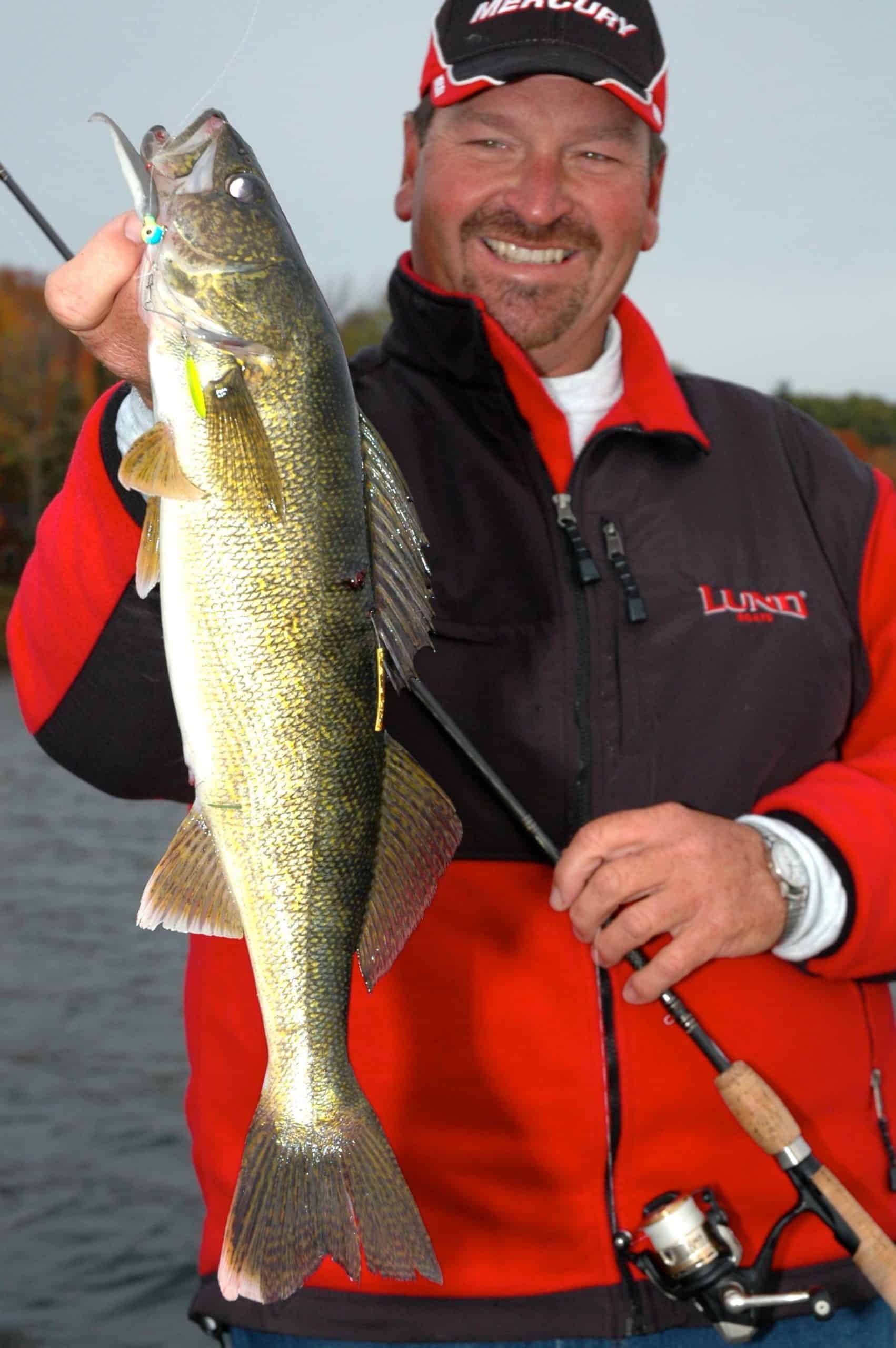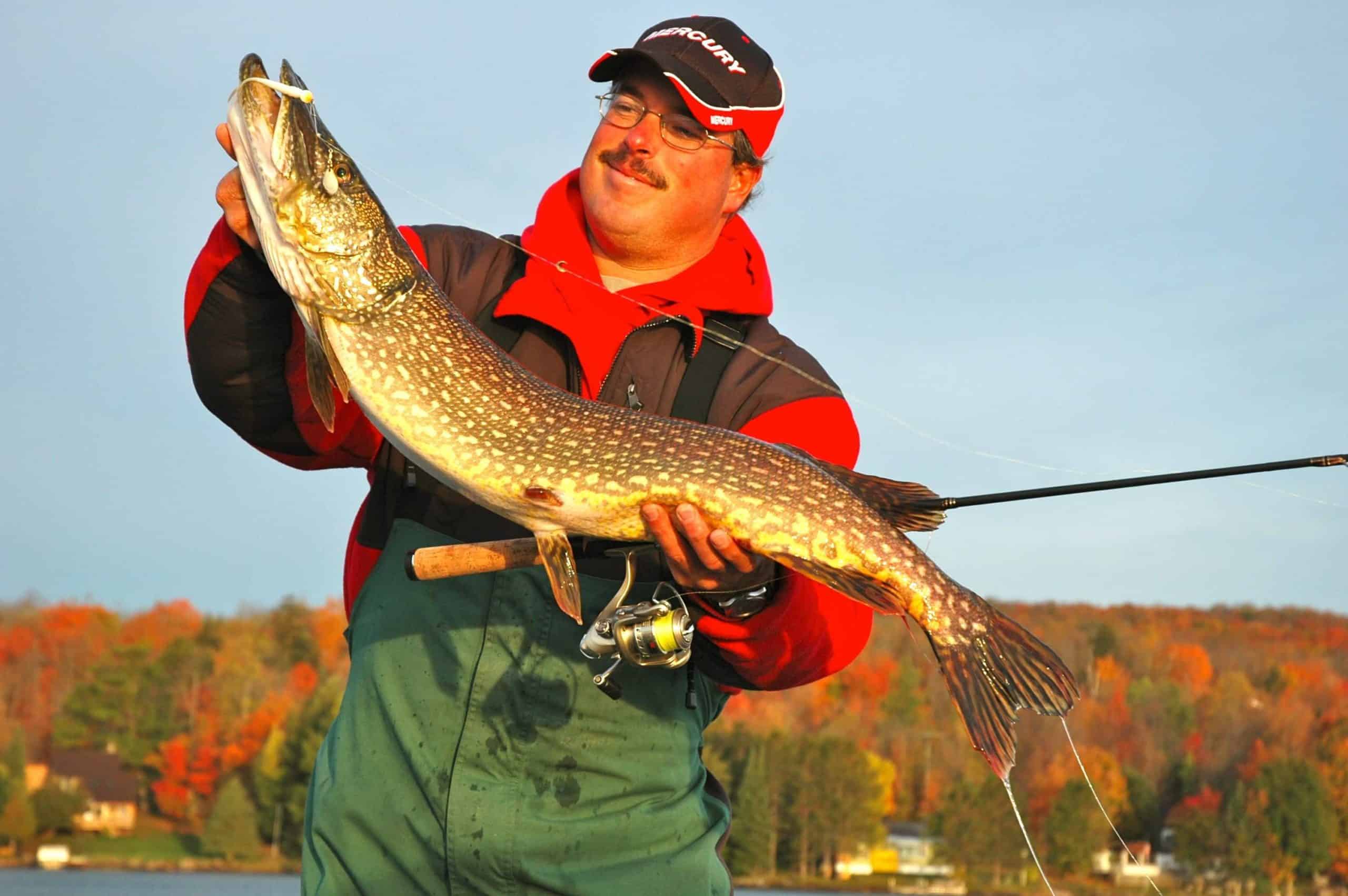by Dave Mull
Autumn means that anglers can find bass, walleye, northern pike and panfish in predictable locations—and predictably hungry, too.

The classic Beetle Spin tipped with a soft plastic minnow and cast over the tops of remaining weedbeds works fall wonders for a variety of species including walleyes.
As days grow shorter and waters cool, fish put on the feedbag to bulk up fat reserves for winter and prepare for spawning in the spring. Not only do they actively feed throughout the day, but the places they look for food are shrinking, making them easier to find. Shorter days and less sunlight causes weeds to die off and concentrates baitfish in the cover that remains. Find the surviving weedbeds, and you’ll find your target species hunting for food nearby.
On many lakes and Great Lakes bays across the Midwest, cabbage is king. These long-stemmed, leafy weeds grow in deeper water right up to the edge of drop-offs and create a wall of opportunity for the savvy angler. Bass, pike and walleye lurk along this edge looking for prey, while schools of panfish such as bluegills, perch and crappie frequently suspend just out from the greenery.
Cabbage is a perfect location for casting deep-diving crankbaits for bass and pike. Position your boat so that you can cast right down the deep side of this weedy wall, as close to the weeds as possible—if you don’t occasionally hook into the weeds, you’re not casting close enough. A medium-action baitcasting combo spooled with 10-pound test monofilament works great. After you cast, point your rod tip at the lure, and when you feel any resistance, snap the rod toward you. You’ll either rip the lure free of weeds or set the hooks into a fish. A great back-up lure to the crankbait is a 1/4- to 1/2-ounce jig-n-pig or jig and soft plastic crayfish trailer. Work this along the deep edge for fish close to the bottom. If pike are present, add a short, fine wire leader to avoid getting bit off—it usually doesn’t keep bass from biting the jig.
Many times, predators will be hunting food over the tops of the weeds, and an effective lure is the classic Beetle Spin—basically a jig with a safety-pin style spinner. A minnow-shaped soft plastic trailer (Berkley Gulp Minnows are a personal favorite) gives the spinner the look of a baitfish and will get attacked by a variety of species.
These diminutive spinners can be buzzed just under the surface or worked slowly, snaked through the weed tops without hanging up. When you spy a hole surrounded by weeds, let the spinner flutter down, giving the appearance of a wounded baitfish—it’s hard for any gamefish to resist. A medium-light spinning rod, its reel spooled with 20-pound test braided line lets you cast the light lures a good distance while lending enough strength to muscle big fish out of the thick weeds.
Cooling waters also draw baitfish, crawdads and the gamefish that eat them onto expansive, shallow flats. Here again, clumps of healthy weeds are good targets for your casts, but fish often are hunting in the more open areas, too. Long casts with tube jigs or soft-plastic grubs let you cover lots of water and represent both a minnow and a crayfish. For soft plastics, a 7-foot spinning rod with 8-pound monofilament lets you wing your offering a country mile. An effective retrieve is to pull the lure forward, then drop the rod-tip, reeling up slack as the lure falls. Fish often grab the lure on its way down, and you’ll hook up on your next pull.
Wind is your friend when fishing these shallow flats, for a few reasons. A significant ripple on the water gives fish a sense of security, as they are not easily captured by birds. A wavy surface also diffuses light, keeping gamefish from getting a good look at your artificial offering and promoting reaction strikes. You can also fling your lure with the wind for longer casts while covering the shallow water without using your trolling motor much, which can spook fish back to their deeper haunts.
Panfish fans find bluegills and crappie suspended over deep water when the days grow shorter. While traditional anchoring and still-fishing with bait below bobbers works, you’re likely to catch more fish by covering water and casting small jigs tipped with soft plastics or bait. Or try trolling small spinners or Spin-N-Glos in front of bait. Follow the general contour of the weedline, slowly and quietly moving the boat with an electric trolling motor, trying different amounts of weight and line out until you start connecting with fish.

Crappie often suspend over deeper water outside of weedbeds in the fall. Small jigs on ultra-light tackle offer a great way to catch them.
Along with actively biting fish, fall-time angling offers another bonus: Most of the recreational boats will have been stored for the winter. No jet skis, no water skiers and lots of cooperative fish make for a fine time on the water.
The Union Sportsmen’s Alliance website is designed to provide valuable articles about hunting, fishing and conservation for members of AFL-CIO affiliated labor unions and all sportsmen and sportswomen who appreciate hunting and fishing and want to preserve our outdoor heritage for future generations. If you would like your own story and experience from the outdoors to be considered for our website, please email us at [email protected].




